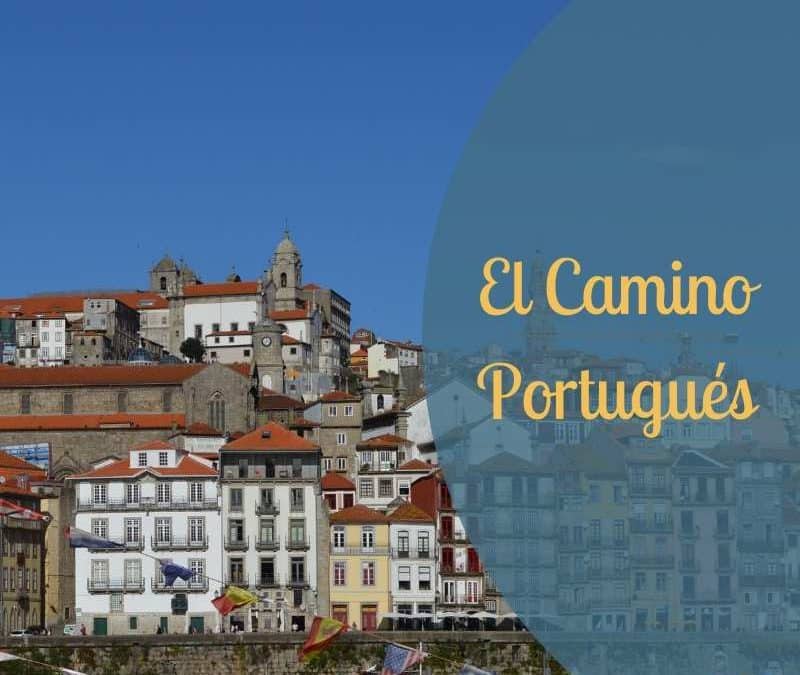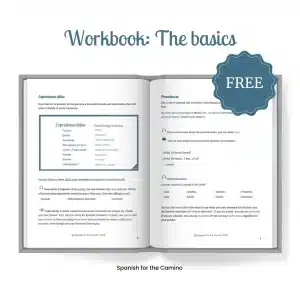For the second Camino in this series I’ve chosen el Camino Portugués (Portuguese Way). It’s the second most popular route to Santiago de Compostela, after the Camino Francés. And also, it is where I live.
As the name suggests, the Camino Portugués goes to Santiago de Compostela from Portugal, but there are a couple of route variations to choose from:
- The best known one is the central route. The most popular starting point for the Camino Central Portugués is Porto (Oporto in Spanish), which is 240 km from Santiago. If you walk 25 km per day on average, you will need around 10 days to complete it.
Some people start their pilgrimage from the Portuguese capital, Lisbon (Lisboa in Spanish), which is further south. In this case, you will have to cover a distance of around 600 km. You will need approximately 25 days to complete it.
- If you decide to start from Lisboa, you could also take el Camino Portugués interior once you reach Coimbra. This route will take you through the Portuguese towns of Viseu, Vila Real and Chaves. Once you enter Galicia the Camino Portugués interior joins the Vía de la Plata.
- After Oporto, you have two options too: you can continue on the central route through Barcelos, Ponte de Lima and Valença. Or you can take the Camino Portugués por la costa (coastal route).
The Camino Portugués in Spain
If you follow the central route, Tui will be the first Spanish town you will encounter after crossing the bridge over the river Miño, which serves as a natural border between both countries.
- Tui was a very important town in medieval times and you can still see many buildings dating back to 15-16th centuries, including its cathedral.
- Porriño is at the centre of an important industrial area. It is one of the world’s biggest granite producers. More on the Porriño-Redondela stage here.
- Redondela. This is where the central and coastal routes meet.
- Arcade is a small coastal town famous for its oysters. Every year, at the beginning of April, Arcade celebrates an oyster festival.
- Pontevedra has one of the most important historical centres in Galicia, after Santiago de Compostela. Most of the city centre has been pedestrianised and Pontevedra has become an internationally acclaimed city, winning awards such as the UN Habitat Award and the Active Design Award.
Pontevedra is also the starting point of the last of the route variations on el Camino Portugués: variante espiritual, which includes a boat ride and joins the central route in Padrón.
- Caldas de Reis is well-known for its thermal waters.
- Padrón is the home of the famous Padrón peppers. If you haven’t heard about them yet, don’t worry! I’m sure you will get the chance to taste them when you do your Camino.
Coastal route of the Camino Portugués
If you follow the coastal route, you will have to take a boat from Caminha to A Guarda. From A Guarda, you will continue along the coast towards Vigo, which is the biggest Spanish town on this Camino. After Vigo, the coastal route joins the central route in Redondela.
There is also a variation of this coastal route, going from Caminha to Valença, along the river Minho. After Valença you then continue on to Tui.
If you don’t have enough time, you can do the Spanish section of this Camino, from Tui. It’s 119 km, enough to get a compostela and easily done in less than a week.
**Update: Regardless of the route you choose, you should know that Spain and Portugal are on different time zones. Once you cross over to Spain, you will be one hour ahead.
This document lists all available accommodations along this route. It’s a great resource.
In a previous post, I shared pilgrims recommendations about accommodation on the Camino Portugués. You can read it here. And if you would like to add any further recommendations (accommodation, food…), I’d love to hear your suggestions.
For more details on some of the stages of the Camino Portugués in Spain:
- Porriño-Redondela
- Redondela-Pontevedra
- Pontevedra-Caldas de Reis
- Caldas de Reis-Padrón
- Padrón-Milladoiro
Today’s Spanish words
Camino Portugués
Lisboa
Oporto
Central
Interior
Por la costa
A Guarda
Vigo
Tui
Porriño
Redondela
Arcade
Pontevedra
Caldas de Reis
Padrón
Variante espiritual
Make sure you don’t miss any posts by subscribing for free here. That way, when a new post is out, you will get it in your inbox. And… you get access to exclusive content too.




Thank-you very interesting
Also for me it will be the second Camino in Portugal after the French thanks for the precious information♥️